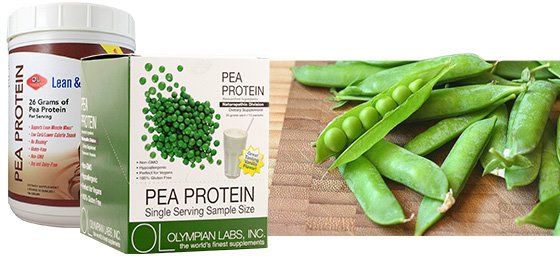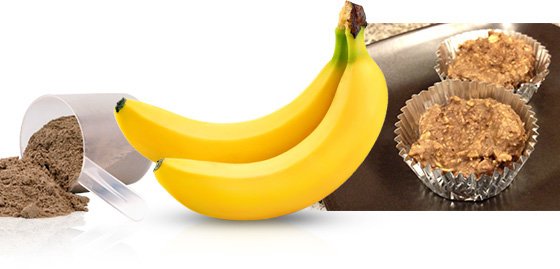You may have never heard of pea protein supplements before, or perhaps you've heard the farce that pea is an incomplete protein. If you didn't bother to take the plunge and give peas a chance, then now's the time.
It turns out that the humble pea is a power-packed veggie protein source that's worth your attention, especially if you have specific food allergies or sensitivities.
If you exercise on a regular basis, pea protein helps provide both a pre-workout energy boost and improved post-workout muscle recovery. It has a complete array of amino acids, including high levels of branched-chain amino acids (BCAAs).
While its amino acid profile is similar to whey protein, pea is particularly high in arginine, lysine, and phenylalanine. Its well-balanced profile fulfills the essential amino acid requirements outlined by the World Health Organization for adults.
Peas, Please!
I suffer from food allergies and am sensitive to commercial pasteurized dairy and eggs, so I gave pea protein a try last year when I had numerous "What the heck am I gonna eat?" moments. Pea protein is not a major allergen. It is a safe alternative for people with allergies to milk and milk products, who must avoid casein or whey proteins, for people with lactose intolerance, and for vegetarians with soy allergies. It's a safe option for people who cannot tolerate animal-based protein powder mixtures.

When I work with personal training clients who haven't taken a food allergy test, I suggest rotating and mixing up protein sources as part of their meal plan to play it safe. Many people assume that all non-soy plant foods are completely devoid of at least one essential amino acid.
The truth is that all plant proteins have some of every essential amino acid. It is now well known that the liver stores various essential amino acids, so it's not necessarily essential to combine different protein sources at each meal.
If you are worried about the taste of pea protein, don't be. It just needs a little extra flavor. People add cream and sugar to coffee, right? I add Xylitol or organic pitted dates to my pea protein to make it a little sweeter. Try extras like raw coconut flakes, chia seeds, fruits, veggies and avocado. It's delicious!
Pea Perks
Unlike popular whey protein powders, pea protein digests easily since it contains absolutely no lactose or glutens. That means no bloating! Many "healthy" foods lead to bloating, which is a common food allergy symptom.
Pea protein may aid in weight loss by possibly lowering ghrelin levels. Ghrelin is a substance secreted by the stomach that signals the brain to stimulate the sensation of hunger. Ghrelin levels tend to rise within a certain time period after consumption of a meal in anticipation of the next meal, thus signaling hunger.
Pea protein slows this process by forming a greater number of peptides, thus delaying gastric emptying, lowering ghrelin levels, and sustaining satiety for longer periods of time.
Unlike whey, pea protein is naturally cholesterol and fat free. Pea is also free of animal protein and soy proteins. It is considered a "greener" product than animal-based whey.
Pea protein is generally more concentrated than whey. It contains 25 grams of protein per 30 gram scoop, while many whey proteins contain 23 or so grams of protein.
As with any protein powder, since it is a dehydrated food, it is important to blend it for about 3-5 minutes to properly hydrate.
Even if you don't have issues with whey or casein protein, pea protein can complement your current plan. Rotate back and forth between protein powders to get a good balance. Try these recipes and go pea!

1 Pea Protein Oat Muffins
I prepare these in bulk to make a dozen. Triple the ingredients to make a bulk batch. The recipe makes approximately 4 muffins.
- 3/4 cup Gluten-free Old Fashioned Rolled Oats
- 2 Whole Eggs
- 2 Egg Whites
- 1 scoop Olympian Labs Chocolate Pea Protein
- 1 Banana
- 1/4 to 1/2 cup Rice, Almond, Hemp, or Coconut Milk
- Mix all ingredients well in blender or Vitamix.
- Pour mixture into muffin tins or baking cups.
- Bake at 350 degrees for 15-18 minutes.
Serving Size Per Muffin (Makes 4)
 Pea Protein Oat Muffins PDF (237 KB)
Pea Protein Oat Muffins PDF (237 KB)
2 Egg & Dairy-Free Pea Protein Oat Muffins
Many people with egg allergies must create workarounds to bake the foods they love and stay healthy. This recipe works for everyone! Again, if preparing in bulk, triple the recipe. This makes approximately 4 muffins.
- 3/4 Gluten-free Old Fashioned Rolled Oats
- 3/4 cup Rice, Almond, Hemp or Coconut Milk
- 1/4 cup Liquid Coconut Oil
- 1 Banana
- 1 scoop Olympian Labs Chocolate Pea Protein
- Mix all ingredients well in blender or Vitamix.
- Pour mixture into muffin tins or baking cups.
- Bake at 350 degrees for 18-20 minutes.
Serving Size Per Muffin (Makes 4) (
 Egg & Dairy-Free Pea Protein Oat Muffins PDF (239 KB)
Egg & Dairy-Free Pea Protein Oat Muffins PDF (239 KB)
Further Reading


